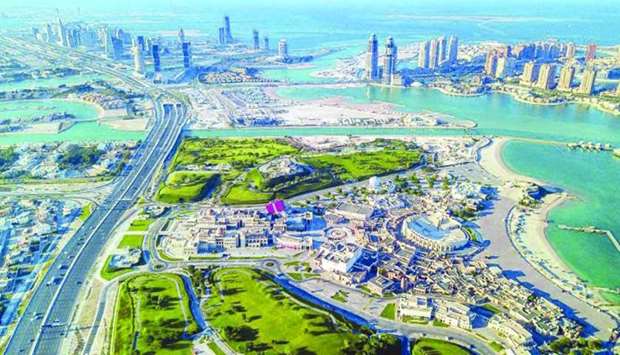Qatar’s economy is likely to return to growth, but the rebound will remain “modest” this year, according to BNP Paribas.
Oil and gas production is likely to increase only slightly, but progress in the vaccination campaign and the benefits of the lifting of sanctions should boost growth in the second half, BNP Paribas’ economic research said in its second quarter report.
GDP will probably return to 2019 levels in 2022, with the expected ending of restrictions relating to the pandemic and the knock-on effects of hosting the football World Cup (FIFA World Cup Qatar 2022).
Non-oil GDP has been the main engine of growth over the last decade, but over the medium term the oil and gas sector will take over as the main source of growth due to the development of substantial liquefied natural gas (LNG) production capacity, BNP Paribas noted.
Production is likely to grow by 60% by 2027. Growth prospects in non-hydrocarbon sectors will be more limited, given the small size of Qatar’s population and the limited attractiveness of its economy outside the oil and gas sector.
The main sources of economic diversification remain in the downstream sectors of the oil and gas industry.
As far as the public health situation is concerned, the death rate due to the pandemic is one of the lowest in the Gulf, BNP Paribas noted.
However, the number of new cases continues to rise, and new restriction measures have been imposed.
Government support to the economy in 2020 was substantial, at around 14% of GDP, it said and noted the bulk of which consisted of support for bank liquidity and a system of restructuring and guaranteeing loans.
Despite this, the country’s GDP fell 3.7% in 2020, with a 2% year-on-year decline in oil and gas production (40% of GDP) and, more importantly, a “sharp” drop in non-oil sectors (down 4.6% year-on year), particularly construction, which accounts for 12% of total GDP and contracted by 4%.
Terming the outlook as “favourable”, BNP Paribas said the Qatari economy began 2021 under relatively favourable conditions.
Despite the fall in oil prices in 2020, the fiscal and current account deficits remained limited. Over the medium term, the development of new gas export capacity should further strengthen an already solid macroeconomic position.
“The main source of vulnerability remains banks’ external indebtedness, which is very high and continues to grow as the economy’s expansion accelerates. However, government support is guaranteed, and the external position of the banks should be restored as a result of the expected slowdown in lending and increase in deposits,” BNP Paribas said.

Oil and gas production in Qatar is likely to increase only slightly, but progress in the vaccination campaign and the benefits of the lifting of sanctions should boost growth in the second half of 2021, BNP Paribas’ economic research said in its second quarter report.



